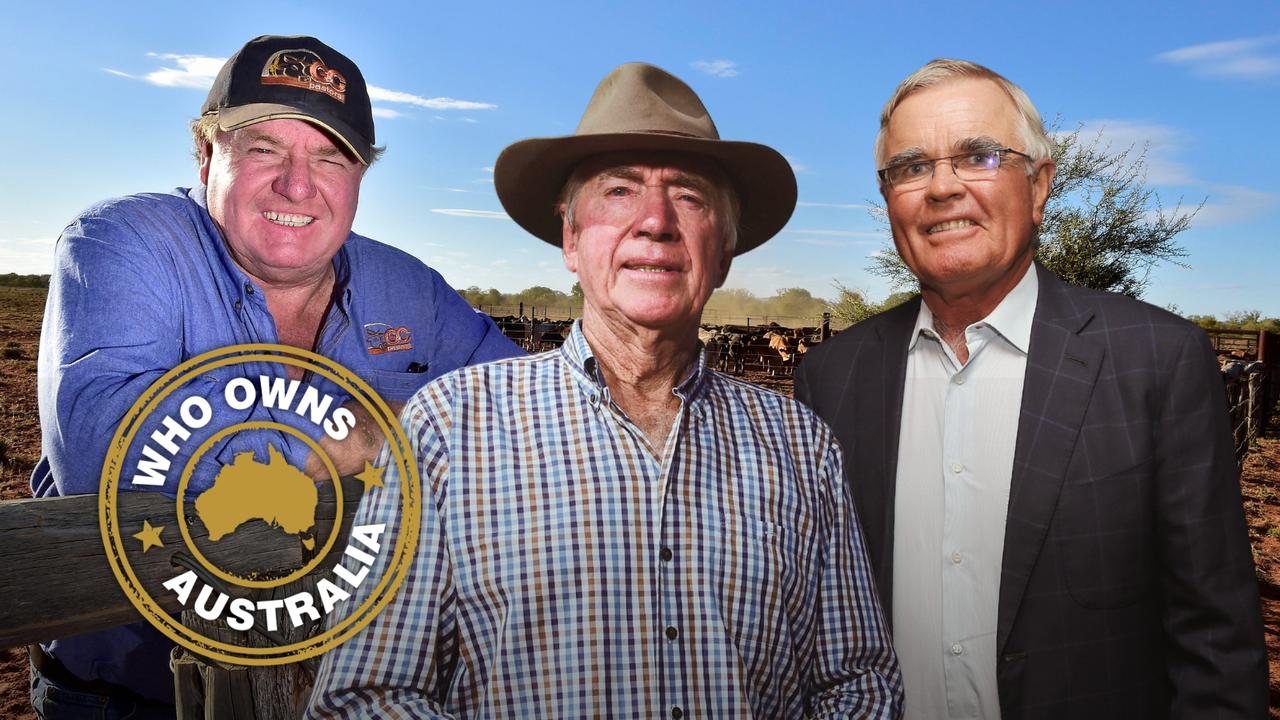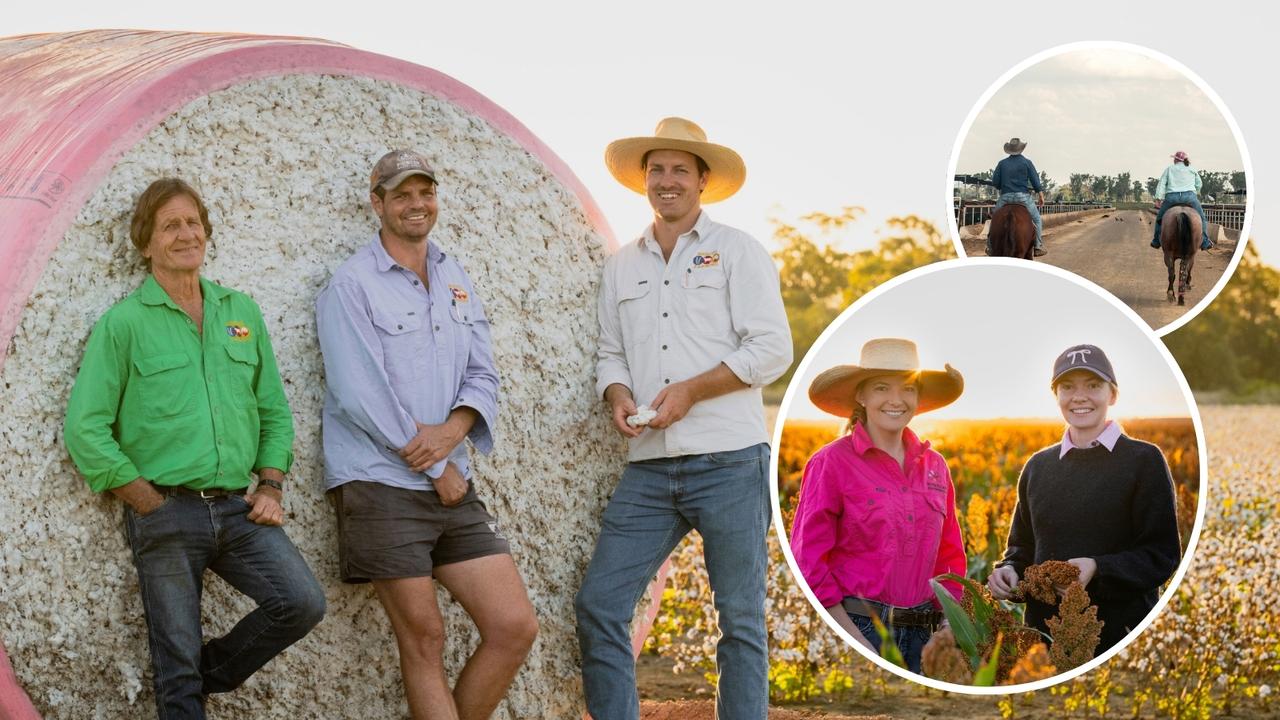Farms booming on smaller acreages, with success of direct-to-customer sales
With booming demand from well-heeled consumers to buy food direct from producers, small-acreage farming is coming into its own.
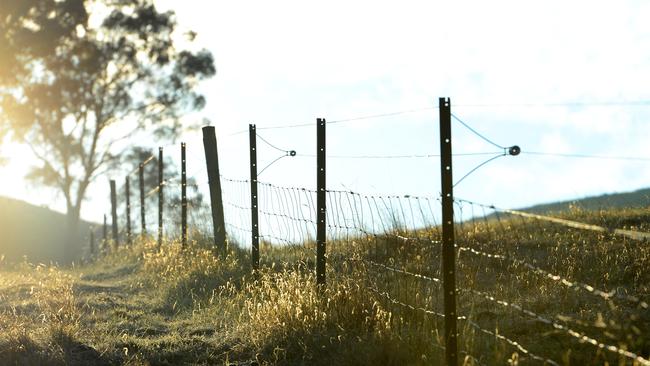
Being called a hobby farmer has never sat well with Jill Noble. With a 62-hectare property on the steep hills of Victoria’s South Gippsland, now running a flock of 300 speciality meat sheep as well as producing eggs, fattening cattle and vegetables for consumer boxes, Noble’s Hallston Valley Farm is no weekend pastime or dilettante’s pursuit.
“It has always really grated on me; we are a small farm but I am absolutely not a hobby farmer,” says Noble, who owns and runs Hallston Valley Farm near Leongatha with her partner, Gary Tie.
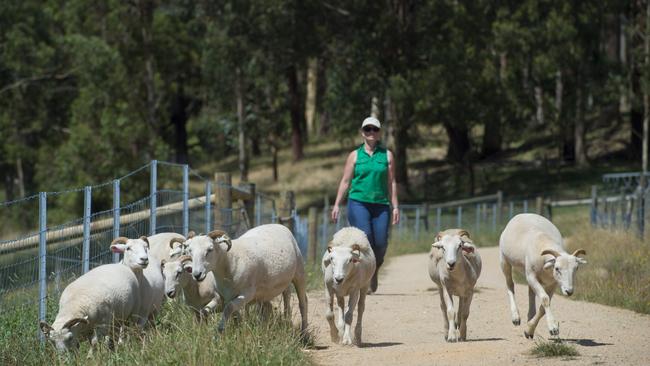
“We treat our farm as a business; we went into it with a commercial mindset complete with a business plan, operational plan and a strategic marketing model.
“Everything we do on the farm is about improving the land, the infrastructure and the livestock, but it is also about making a profit.”
And Noble and Tie are doing just that. Dozens of consumers in Melbourne, about 120km from the small rural community of Hallston, now buy top quality Wiltshire Horn lamb meat directly from the couple.
Each year, more than 70 of their seven-month-old young lambs are ethically slaughtered at the nearby Warragul meatworks and carefully carved into chosen cuts by the local butcher. A side of home-delivered lamb costs customers $150, and a whole lamb $300. Older ewes also become tasty diced lamb or lean lamb sausages.
Noble will either deliver the meat direct to the customer’s door, or buyers are welcome to visit Hallston Valley Farm and explore the farm where the lambs are raised. “They want to see what we do and how we do it,” Noble says.
Demand is booming, particularly since the pandemic year of 2020, when Melbourne went into lockdown, supermarkets shelves were empty and stuck-at-home consumers suddenly became more aware than ever of the importance – and privilege – of easy access to high quality food, buying local, and supporting Australian farmers who produce their food.
“We did our research first (Gary has a professional background in sales and Jill in marketing and human resources) and found a paddock-to-plate direct selling model like ours is viable as long as your farm is within an hour’s drive of more than 25,000 people,” says Noble, whose farm is run along sustainable, low-chemical use, and regenerative farming lines.
“We have a few million people (in Melbourne) right on our doorstep so that’s covered; and since COVID we have a real surge of interest in paddock-to-plate food and getting to know the farm – and the farmers – who produce your food. Using social media, like Instagram and my podcasts, really helps.”
It’s a change in approach, even philosophy, that is starting to shift long-ingrained attitudes – particularly in established rural areas around Australia – towards farmers running businesses on smaller acreages in contrast to the traditional large cropping properties of the Mallee or vast outback cattle stations of northern Australia.
On those big-scale properties, wheat harvests are calculated in thousands of tonnes, wool sales in hundreds of bales of fleeces and annual cattle turnoff can bring in millions of dollars of income. Production is generally focused on supplying bulk commodities to big export markets and multinational food companies.
It is among these core Australian grazing and farming districts that newcomers running small-scale operations – especially if they have arrived new to farming and still hold down a city job to pay for their new enterprise – have sneeringly been branded Collins St cockies, Pitt St farmers, lifestylers and “townies”. Land taken up by the dreaded hobby farmer has typically been seen as good farming land taken out of serious food production. Paddocks that could be growing food replaced with a big house, a few horses and – the sure sign of the hobby farmer – a couple of alpacas and miniature Dexter cows.
Production statistics endorse this long-held view of the relative insignificance of small farms in the Australian rural landscape.
The latest figures from the Australian Bureau of Agricultural and Resource Economics show that of the 52,000 farms in Australia classified as broadacre, dairy or vegetable growing – which may not embrace many smaller farms – the largest 10 per cent by financial turnover generated 48 per cent of production by volume. The smallest third of all farms grew just 4 per cent of food and fibre output.
But the cycle is turning. A combination of new agricultural technology, more diverse farming options, the rise of social media, and more enlightened attitudes is changing the way small farms and their businesses are now perceived.
A recent global study also found relatively smaller farms are two-to-10 times more productive per hectare than larger ones. The key reason is that families running small farms – in less developed countries in Asia and Africa, but also in more developed nations such as Russia, Brazil and South Africa – have a greater personal interest and commitment to grow as much food as possible to eat and sell than corporate-owned farms.
Aside from the basic metrics of food production and farm yields, the higher value profits and gross margin per hectare that some small farms in Australia are able to attain – such as vineyards, cherry, saffron and truffle farms have always proved – are starting to be better appreciated.
The rise of direct-selling models – just as Hallston Valley Farm has perfected – combined with value-adding to farm produce, has revealed how many top restaurants and well-heeled city-based consumers are prepared to pay higher prices to access high quality, ethically and sustainably grown food, sometimes locally branded, direct from the farmer.
“Small farms can be both highly productive and profitable,” says John Harvey, managing director of national rural industries research and development corporation AgriFutures.
“To me, it’s about looking at a small acreage farm with a different perspective; you have to look at what your business niche is, and what will be your highest value turnoff per hectare.
“And it’s not just about the produce from a small farm; it’s about the authenticity, the narrative, the story that goes with producing that quality food, and the certain way it has been grown, whether it is organic, nose-to-tail, paddock-to-plate, regeneratively farmed, or part of the slow food movement.”
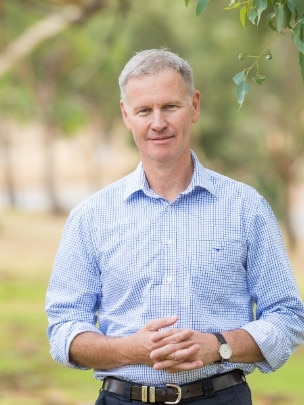
Harvey says TV shows such as Matthew Evans’ Gourmet Farmer, River Cottage, and Maggie Beer’s The Cook and the Chef, have shown consumers what happens on a small farm, and have been inspiring to those looking for their food to have a story or experience embedded in it.
“A lot of small farmers have a real interest in producing quality food in a sustainable way, and because of that they can potentially reach niche parts of the market where people are prepared to pay much more than they normally would in a supermarket for something special,” Harvey says.
“It’s about consumers looking for a human connection in their food, right back to the farmer and his or her animals, and even sometimes staying on the farm in an Airbnb to see what a farm is like. The best small farms that are profitable are really a mix of quality produce, slow food, agritourism and hard-headed business.”
Recent AgriFutures research investigating what city consumers expect and want from Australian farmers and their food found, perhaps surprisingly, the highest priority was environmental stewardship; they wanted farmers to look after the environment, to be sustainable, to preserve the land and to leave it in better shape for future generations.
The second top priority was a desire for farmers to be responsive if there are issues that need addressing; whether it was about animal welfare, preferences for zero-carbon food or non-mulesed wool sheep, or issues surrounding chemicals such as the recent debate about glyphosate use.
The third priority – and only third – was a wish and expectation for Australian farmers to produce high quality and safe food and fibre. “They are really interesting results because it is probably small farmers that can really lock in and deliver those wanted values the most easily,” points out Harvey.
“Together with the impact of COVID – which reminded people when they were so shocked by empty supermarket shelves that they can’t take food, and farmers, for granted – we are seeing a change in the way farms are viewed. There will always be the big-scale producers, but the high-value niche for small farmers is opening up.”
In some ways, the appreciation of the value of small farms, particularly in western cultures such as Australia, has been slow in coming.
In the 1970s, German economist Ernst Schumacher started a movement when he wrote his seminal book, Small is Beautiful, challenging the popular concept of globalisation and large-scale industrial agriculture.
I remember, as an agricultural science student in early 1977, sitting in a University of Western Australia lecture theatre listening to Dr Schumacher talk about how small farms in Asia were the powerhouses of the economy, how monocultures, corporate farming and chemicals were not good for the soils and butterflies, and how the best farming followed natural cycles.
The permaculture movement, which is similar to regenerative agriculture and organic farming – once again more common on smaller-sized farms – began almost at the same time.
In Victoria’s Gippsland, Neil O’Sullivan admits it was his decade working in overseas aid for the World Bank, Oxfam and the Asian Development Bank, mainly assisting to alleviate rural poverty, that opened his eyes to the potential of intensive small farming in countries such as Vietnam, with its steep hills and fascinating terraced agriculture.
“Not a spot there is wasted; anywhere it rains every square centimetre is used for food,” O’Sullivan says.
Thirty years ago he returned to West Gippsland where he had previously worked as an industrial chemist, bought 12 hectares of sloping high-rainfall hill country in the Strzelecki Ranges and decided to experiment with growing proteas.
“It was all I could afford; there was nothing here except weeds,” laughs Neil, surveying his steep hills now terraced and covered with a mass of brightly flowering trees and shrubs, some of the waratahs and king proteas still his original trees.
It was the beginning of the successful Allambee Flower Farm that Neil runs with his wife, Quynh, and two young sons, supplying waratahs, proteas, leucadendrons, banksias, kangaroo paws and other native flowers to Sydney and Melbourne.
Neil propagates and grows the flowers while Quynh, who O’Sullivan met when working in Vietnam, is responsible for harvesting most of the stunning blooms by hand herself every day, arranging workers to sort and pack the long flower stems into chilled boxes to be sent to Sydney flower wholesalers twice a week, and finding new markets.
Their latest venture is employing on-site florists to make posies and floral arrangements to sell direct to local farmers’ markets and shops, while several big hotels in Melbourne have started to buy their flowers direct from the farm.
Demand is strong – “I have always refused to cut prices and Melbourne is much more prepared to pay for quality stems,” Quynh says – helped along by the unprecedented demand during the pandemic from people stuck inside working from home looking for some brightness in their day, or wanting to send flowers to relatives and friends they could not visit.
With most of its hills now terraced and covered by abundant flowers, the O’Sullivans are planning to buy a neighbouring farm so they can expand their successful flower business. “I call us a microfarm but we are certainly not an example of fertile land being taken out of production,” Neil says. “That’s an erroneous view in my experience.
“We make a very comfortable living, we are profitable, we employ five locals and we are looking to expand; it’s certainly possible if you follow basic economic rules and supply what the market wants to run a good business on small acreage.”
For Megan Williams, it was necessity that forced her and husband Chris to become serious camel farmers, in heartland dairy country near Kyabram in northern Victoria.
When the milk price crashed in 2016, followed by soaring water prices, the young couple’s dream of becoming dairy farmers evaporated. Instead Megan, who had lived and worked in central Australia when young, decided the future lay in farming camels on their 40-hectare farm and producing little-known camel milk. The Camel Milk Company was born.
It was a struggle from the start, with little information available on how to farm camels, process their milk and then sell it for a profit. She started with three camels in 2014, then quickly scaled up, driven by a determination never to be beholden again to big processing companies who held the power to set prices paid to farmers, as she had seen bring down the dairy industry in 2016.
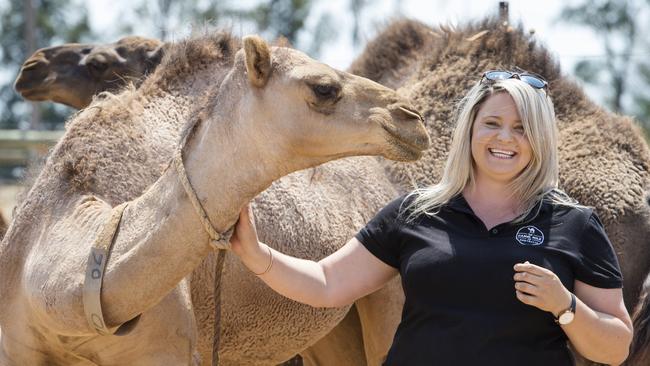
“We were small farmers on a small land holding – and there was a stigma in that at the time – but we had three things going for us; we knew we were good farmers, we didn’t mind a challenge and we knew we had to be in a new industry where we could be a price setter, not a price taker,” Williams says.
Williams had to start from scratch, first contacting Middle eastern communities in Melbourne who were familiar with drinking camel milk, creating a brand and then gradually developing new markets for the expensive milk – it retails for $14-16 a litre – in health food shops and cafes. Branching into value-added camel milk skin care products and farm tours helped the bottom line too.
Now the farm has grown to 180 hectares, there are 430 camels on the farm – 200 being milked – and 1000 litres of the business’s sought-after camel milk is being produced a day.
“We’re definitely not a hobby farm; we might be smaller in area but we now employ 11 people, both of us work full time in the business and are still growing,” Williams says. “The banks – who saw us a joke back in 2015 and didn’t think we were ‘proper farmers’ – are now right behind us, because this is a very viable business.
“But we are typical of many smaller farmers; we are a paddock-to-plate business, we are producing a high-value product sold direct to cafes and health food stores, and part of that is sharing with our customers – through social media and online videos – the value of farming to Australia and the authenticity of everything we do.”
Sarah Nolet, key player in the successful Farmers2Founders mentoring program that has helped many small producers turn their ideas into viable agribusinesses, believes small farms now have a greater opportunity to be highly profitable.
She credits the ability of small-scale farmers to tell their own story directly to consumers via social media, to build their own brands and control their own markets, prices, positioning and destiny for a change in both their fortunes and the way they are perceived.
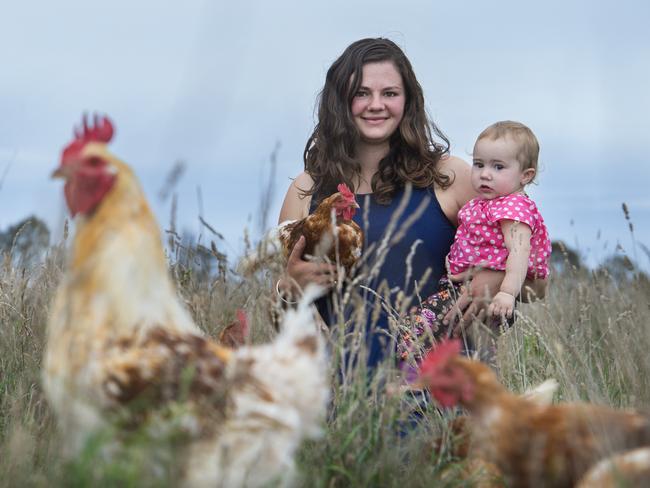
The rise of crowdfunding is also helping many young or aspiring small farmers. In 2014 the public contributed $67,000 to Madelaine’s Eggs, a free-range egg business run by Madelaine Scott, then still a teenager. The funds enabled her to buy an egg-grading machine. Two years ago Tasmanian Bruny Island cheesemaker Nick Haddow appealed, via crowdfunding, for help to start an ethical and organic dairy farm, Glen Huon Dairy, providing fresh milk for his famous cheeses. More than $200,000 poured in.
“On the operational side, it is easier for small farms to be efficient now – or for their owners to work off farm but still run a farm business, because there are now so many new agtech aids to help them,” Nolet says.
“Whether it’s a solar-powered sensor making sure your water troughs are full, a small robot spraying your paddock 24/7 or a system that monitors your stock while you are away, low-cost agtech breakthroughs are now making it unnecessary to employ a contractor or a manager and making the expenses less and the small farm more efficient.”
Nolet says value-adding produce is another no brainer for small farms, whether it is Megan Williams turning her camel milk into soaps, Quynh O’Sullivan making bouquets for florist shops and supermarkets on her native flower farm, or the truffle grower who converts his seconds into bottled truffle oil.
“Anything that makes your output higher value and expands your brand recognition, range and reputation more than makes up for what many small growers lack in size and volume,” Nolet says.
Danny Thomas, rural real estate director with the LAWD group, says the other huge benefit of the boom in small farms is the investment, new skills and fresh ideas their owners bring into a region. “That’s made many of these small acreages no longer hobby farms but profitable boutique food businesses; you now see people making good incomes out of free-range eggs, heritage pigs, olives, bees and, as always, the retired surgeon who grows his own grapes and makes his own wine … It’s not for tax purposes any more,” Thomas says.
“They’re earning more per hectare off small parcels of land than many conventional farmers and bringing investment and new ways of thinking into Australian agriculture that is so greatly needed if it is to become the $200 billion industry it has the potential to be.”
BIG FOREIGN OWNERS TIGHTEN GRIP ON OUR FARMS


